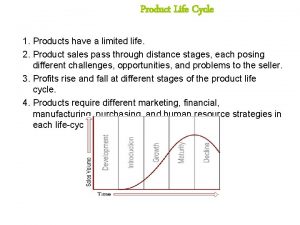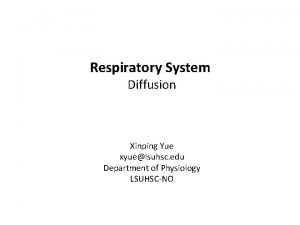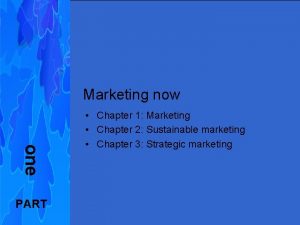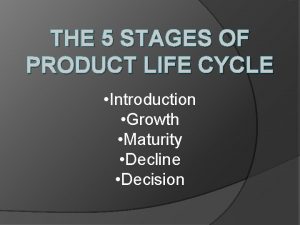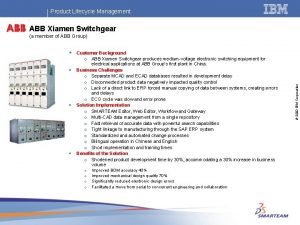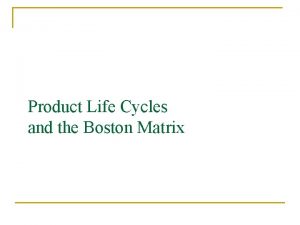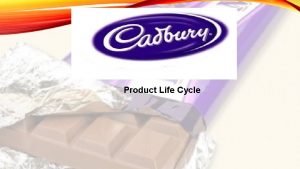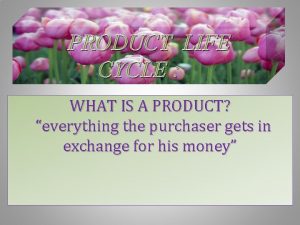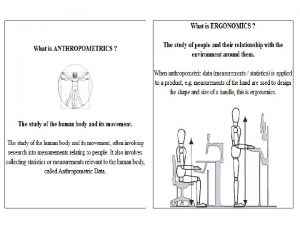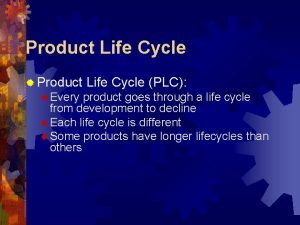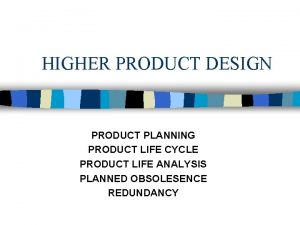Product Life Cycle 1 Products have a limited














- Slides: 14

Product Life Cycle 1. Products have a limited life. 2. Product sales pass through distance stages, each posing different challenges, opportunities, and problems to the seller. 3. Profits rise and fall at different stages of the product life cycle. 4. Products require different marketing, financial, manufacturing, purchasing, and human resource strategies in each life-cycle stage.

Product Life Cycle Sales and Profit

Different patterns of Product Life Cycle

Introduction Stage Sales Low sales Costs High cost per customer Profits Product Negative Create product awareness and trial Offer a basic product Price Use cost-plus Distribution Build selective distribution Advertising Build product awareness among early adopters and dealers Marketing Objectives

Introduction Stage: Marketing Strategies High Promotion Low High Rapidskimming strategy Slowskimming strategy Low Rapidpenetration strategy Slowpenetration strategy Price

Growth Stage Sales Rapidly rising sales Costs Average cost per customer Profits Rising profits Marketing Objectives Maximize market share Price Offer product extensions, service, warranty Price to penetrate market Distribution Build intensive distribution Advertising Build awareness and interest in the mass market Product

Growth Stage: Marketing Strategies –Improve product quality and add new product features and improved styling –Add new models and flanker products –Enter new market segments –Increase distribution coverage and enter new distribution channels –Shift from product-awareness advertising to product-preference advertising –Lower prices to attract next layer of price-sensitive buyers

Maturity Stage Sales Peak sales Costs Low cost per customer Profits High profits Marketing Objectives Product Price Distribution Advertising Maximize profit while defending market share Diversify brand models Price to match or best competitors Build more intensive distribution Stress brand differences and benefits

Maturity Stage: Marketing Strategies –Market Modification • Expand number of brand users by: –Converting nonusers –Entering new market segments –Winning competitors’ customers • Convince current users to increase usage by: –Using the product on more occasions –Using more of the product on each occasion –Using the product in new ways Volume = Number of brand users X Usage Rate per user

Maturity Stage: Marketing Strategies –Product modification • Quality improvement: Increasing product’s functional performancedurability, reliability, speed, taste. • Feature improvement: Adding new features that expand the product’s versatility, safety, or convenience. • Style improvement: Increasing product’s aesthetic appeal. –Marketing-Mix Modification • Prices: • Distribution • Advertising • Sales promotion • Personal selling • Services

Decline Stage Sales Declining sales Costs Low cost per customer Profits Declining profits Product Reduce expenditure and milk the brand Phase out weak items Price Cut price Distribution Go selective: phase out unprofitable outlets Reduce to level needed to retain hard-core loyal customers Marketing Objectives Advertising

Decline Stage: Marketing Strategies –Increase firm’s investment (to dominate the market and strengthen its competitive position) –Maintain the firm’s investment level until the uncertainties about the industry are resolved. –Decrease the firm’s investment level selectively by dropping unprofitable customer groups, while simultaneously strengthening the firm’s investment in lucrative niches –Harvesting (“milking”) the investment to recover cash quickly firm’s –Divesting the business quickly by disposing of its assets as advantageously as possible.

Summary üAfter differentiation, next step is to decide upon a positioning strategy and communicating it to the consumers. üMany marketers advocate promoting one product benefit, thus creating a USP as they position their product. But some use double benefit and triple benefit positioning also. üDuring PLC, companies need to reformulate their marketing strategies several times. üThe general sequence of stages in any life cycle is introduction, growth, maturity and decline. üMany products exhibit a bell shaped PLC, there are many other patterns also. üEach stage call for different marketing strategies as features at all stages are different.

 Products have a limited life
Products have a limited life New product development and product life cycle strategies
New product development and product life cycle strategies Ficks law
Ficks law Genie auto products private limited
Genie auto products private limited Market offerings are limited to physical products
Market offerings are limited to physical products 5 stages of the product life cycle
5 stages of the product life cycle Growth-slump-maturity pattern
Growth-slump-maturity pattern Abb lifecycle management
Abb lifecycle management Boston matrix product life cycle
Boston matrix product life cycle Product life cycle presentation
Product life cycle presentation What is the maturity stage of the product life cycle
What is the maturity stage of the product life cycle Dairy milk product life cycle
Dairy milk product life cycle Embedded system development life cycle
Embedded system development life cycle Abb life cycle
Abb life cycle Product life cycle chart
Product life cycle chart
